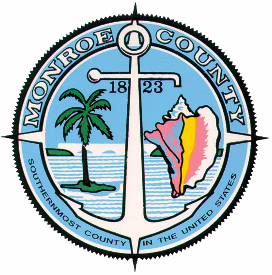BOCC to Discuss How to Spend Monroe County’s $20 Million Share of RESTORE Act Funds

The Monroe County Board of County Commissioners soon will begin discussing the types of water quality projects to fund with the County’s $20 million share of Restore Act Funds that stem from the BP oil spill settlement.
Monroe County will receive $7.5 million from a local pot and $12.5 million from the pot for the “Gulf Consortium,” which consists of Florida’s 23 counties that border the Gulf of Mexico.
The County’s proposed plans for its $12.5 million from the consortium pot will be shared with the Gulf Consortium, which is working on a grand plan that will include projects from all 23 counties. The consortium’s plan has to be approved by the Governor and the federal council, which oversees projects for the entire Gulf. The consortium money is not coming in a lump sum. Oil giant BP structured the payouts to be made over 15 years, beginning in 2017.
While it will take a lot more effort over years to see the end results, Dr. Chris Bergh, the South Florida Conservation Director for The Nature Conservancy, said this funding for the environment and economy of the Keys is “critically important.”
“This is the silver lining of the terrible tragedy of the Gulf oil spill,” he said. “Big, active hands-on conservation and restoration projects almost always depend on big funding sources beyond the norm that federal, state, county and local governments dedicate to natural resource protection, managing and monitoring.”
The federal RESTORE Act, which President Barack Obama signed into law in 2012, mandates that fines levied against BP and Transocean for violating the Clean Water Act go to restoration and water quality efforts of the five states affected by the 2010 Deepwater Horizon Oil Spill. This was the largest marine oil spill in history, spewing 4.9 million barrels of crude oil into the Gulf of Mexico.
In late 2015, the Gulf Consortium agreed to equally distribute its $286 million portion of RESTORE Act funds among the 23 counties.
“Getting an equal split of the Gulf Consortium pot was not an easy feat,” said Lisa Tennyson, Monroe County’s Director of Legislative Affairs. “Commissioner George Neugent has sat on the consortium’s five-person executive board since the beginning. He led the charge for an equal split, advocating for it really hard for many months. In the consortium meetings, Monroe’s split proposal was nicknamed the Monroe Doctrine.”
The local pot of money split the funds 75/25, with the eight Florida counties directly impacted from the oil receiving 75 percent, and the other 15 “disproportionately affected” counties sharing the other 25 percent. Had the consortium pot been split like the local pot, Monroe County would have received far less than.
“Commissioner Neugent was sympathetic to the eight counties’ oil impacts,” Tennyson said. “Still, he steadfastly believed that sharing the funds equally reflects the shared commitment of the 23 counties to restore and maintain the health of the Gulf that is so important to the entire state.”
Neugent, who has sat on the Consortium’s executive board since its inception, also represented the Gulf Consortium in 2013, when he testified before the United States Senate Committee on Commerce, Science and Transportation. He was the only elected official to testify at the committee hearing, Gulf Restoration: A Progress Report Three Years after the Deepwater Horizon Disaster.
Now, Monroe County is tasked with how to best spend the $20 million, while working within the complicated framework of the Gulf Consortium, for much needed water quality projects. These include the continuation of ongoing projects such as canal restoration.


Facebook Comments